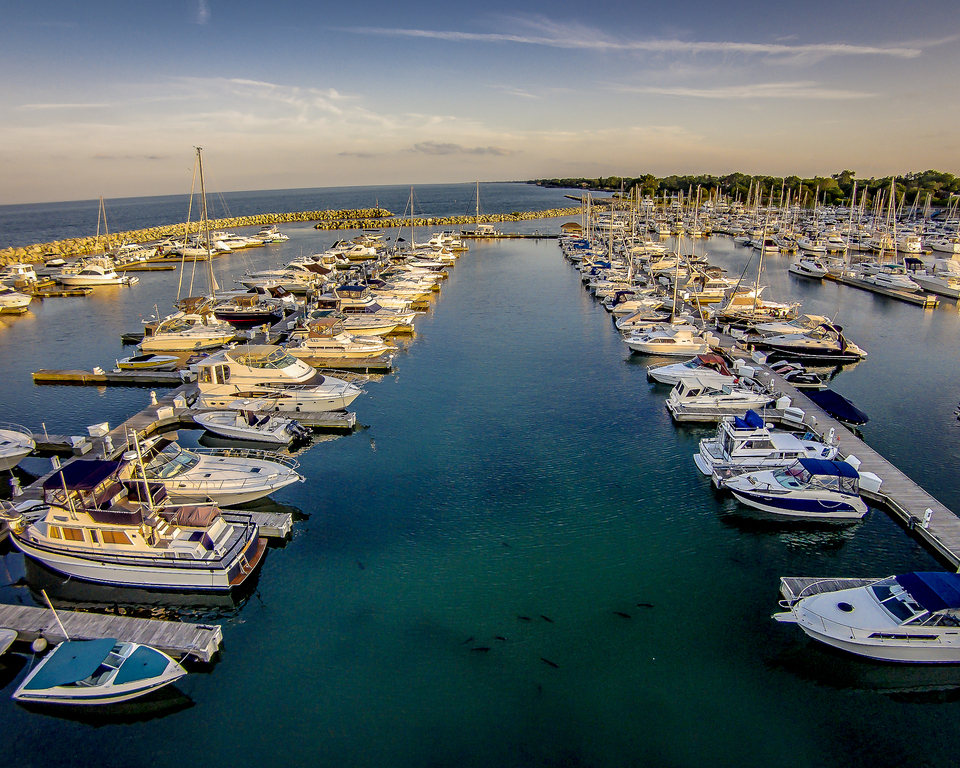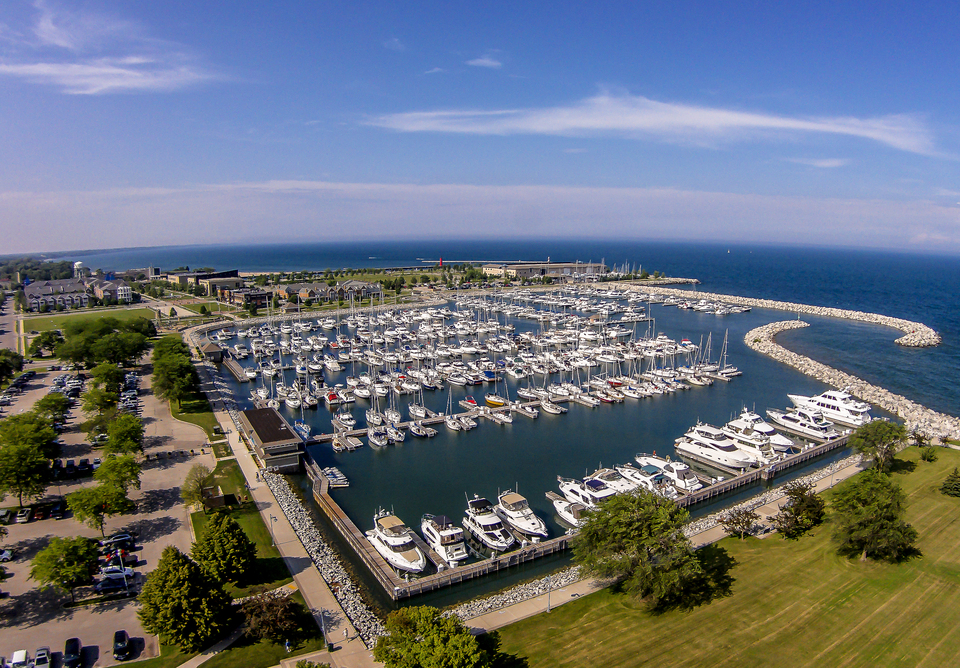Lake Michigan at Below-Normal Water Level
Most Great Lakes down. Wisconsin had one of 20 driest winters ever.

The Southport Marina in Kenosha has had to limit boats with deeper drafts due to low water levels. Photo courtesy of Southport Marina
Water levels on most of the Great Lakes are below their long-term average for this time of year as they’ve fallen to levels not seen in more than a decade.
Lakes Michigan, Huron, Superior and Ontario are about 4 to 6 inches below the long-term average as of Friday. Lake Erie is the only lake that remains above normal, but it could fall below average later this summer.
He said the lakes are well below record high levels that occurred between 2019 to 2021. Wisconsin’s shoreline communities spent an estimated $86 million on damages due to flooding, erosion and storms.
“This is really the first time since 2013 or 2014 that we’ve seen levels in the system below average,” Kompoltowicz said.
Water levels on the lakes rose between 2 to 7 inches from last month as they continue their seasonal rise, but levels still remain below normal.
At the end of February, all lakes were below average for the first time since the end of March 2014, according to the National Oceanic and Atmospheric Administration. Kompoltowicz said drier than normal conditions in the last two years have meant less rainfall and runoff making its way into the Great Lakes.
Lakes Superior, Michigan and Huron saw greater-than-normal declines this winter, which was one of the top 20 driest in Wisconsin. The drop in water levels is leaving behind larger beaches and shallower water in certain areas.
Barry Moreland, owner of Southport Marina in Kenosha, estimated that water levels are down 18 inches to 2 feet. He said because of that drop, they are discouraging racing sailboats with deep keels from coming into the marina.
“Just to be on the safe side, we just tell them if you’re over 7 feet [deep below the water line], just don’t bother coming because we don’t want them to get stuck,” Moreland said.

The Southport Marina in Kenosha is conducting more dredging due to lower water levels on Lake Michigan. Photo courtesy of Southport Marina
While they account for a small share of boats, Moreland said the lower levels mean more dredging this year at the marina that is expected to cost around $200,000. He said warmer weather has led to more open water and evaporation on the lakes.
“We’ve had such mild winters the last couple years that it doesn’t help by any means,” Moreland said.
In northern Wisconsin, water levels are down 16 inches at the 121-slip Ashland Marina. Scott Stegmann, marina manager, said they’re looking to possibly dredge about 3 acres of the marina for the first time in a dozen years.
He said they also have to limit traffic to boats that don’t sit as deep in the water.
“It just impacts our larger boats being able to use that facility so that we can get tourism and stuff like that for the larger boats that want to go fishing or just to recreate, to get out to the [Apostle Islands] and such,” Stegmann said.
Funding is often a challenge for the small municipal marina that has a budget of roughly $350,000. Stegmann said the city is looking into state or federal grants that may be available to fund dredging.
The levels haven’t posed a problem for other marinas along the lakes, including the 208-slip Pikes Bay Marina in Bayfield on Lake Superior.
“It’s definitely something that we’ve had to watch. If it swung too far in the wrong direction, it could become a problem,” Charlie Jarvis, the marina’s assistant manager, said.
On Lake Michigan, the vast majority of the Port Washington Marina has also been unaffected, said Dennis Cherny, the city’s harbormaster. He said only one area for small boats has somewhat limited access due to lower water levels.
Lakes Superior, Michigan and Huron are forecast to largely remain below their long-term average for the next six months. However, Kompoltowicz said they’re not projecting any record lows.
Most Great Lakes face below-normal water levels after reaching lows not seen in over a decade was originally published by Wisconsin Public Radio.
If you think stories like this are important, become a member of Urban Milwaukee and help support real, independent journalism. Plus you get some cool added benefits.






















What were the causes? Does one year of below average snow fall account for this? What about communities using a lot more water?
When will Chicago ever undo its terrible move of sending their water towards the Mississippi river instead of Lake Michigan where it SHOULD be going?
Changing the direction of river flow shouldn’t be seen as an achievement.